Tips for Growing Trouble-Free Cherry Tomatoes
Grown right, these little fruits are less prone to problems that plague larger-fruited varieties
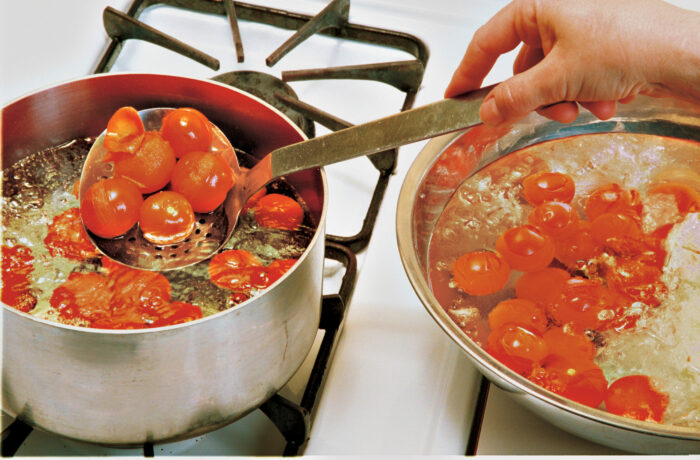
Cherry tomatoes are easy-going fruits, which, if grown right, will yield basket after basket of flavorful harvests. They are less prone to many of the problems that plague larger-fruited varieties and they often produce fruit early.
My 96-year-old grandmother, Jinx, when asked the secret to her longevity, advises, “Never say can’t, try everything once, and make one new friend each year.” She should add growing cherry tomatoes to her litany. Other than walking the dog or taking a language class, I’ve found that the best way to increase my circle of friends is to grow cherry tomatoes. When they start ripening in late July, I place small baskets of these multicolored sweets around the office. Without fail, people I’ve never met before approach me to say how much they enjoyed a particular variety, and I invite them to visit my garden for more.
Wild cherry tomatoes are the grandmothers of most tomato varieties we enjoy today. Native to the South American Andes, they traveled north through Central America to Mexico, where they were domesticated and cultivated before the arrival of Columbus. In the 16th century, Spanish conquistadors returned from Mexico with the seeds of small-fruited tomatoes, as well as those of larger, irregularly lobed cultivars.
According to Andrew F. Smith, author of The Tomato in America, many European varieties were derived from crosses between these different forms. A related species, the tiny-fruited currant tomato (Lycopersicon pimpinellifolium) is native to the western coastal areas of Peru and Ecuador, where it grows as a sprawling weed.
Because of its resistance to diseases like fusarium and bacterial wilt, as well as its habit of producing fruit in long trusses, the currant tomato has been crossbred with other tomatoes, producing many modern cherry tomato varieties.
Choose varieties suited for your region
At a market garden I worked for in Germany, we would sprinkle a few gold tomatoes in each box of Sweet 100s, just to highlight their glowing red color. Imagine what you could do with today’s array of cherry tomato colors and shapes.
If you’ve never outgrown your desire to play with food, and if the thought of making mosaics with multicolored cherry tomatoes appeals to you, then you can choose yellow, orange, pink, or green, round, oval, pear-shaped, or pointed varieties. Since there are so many, I’ll concentrate on my favorites, their flavor, and their suitability for different climates—a deciding factor in areas with difficult growing conditions.
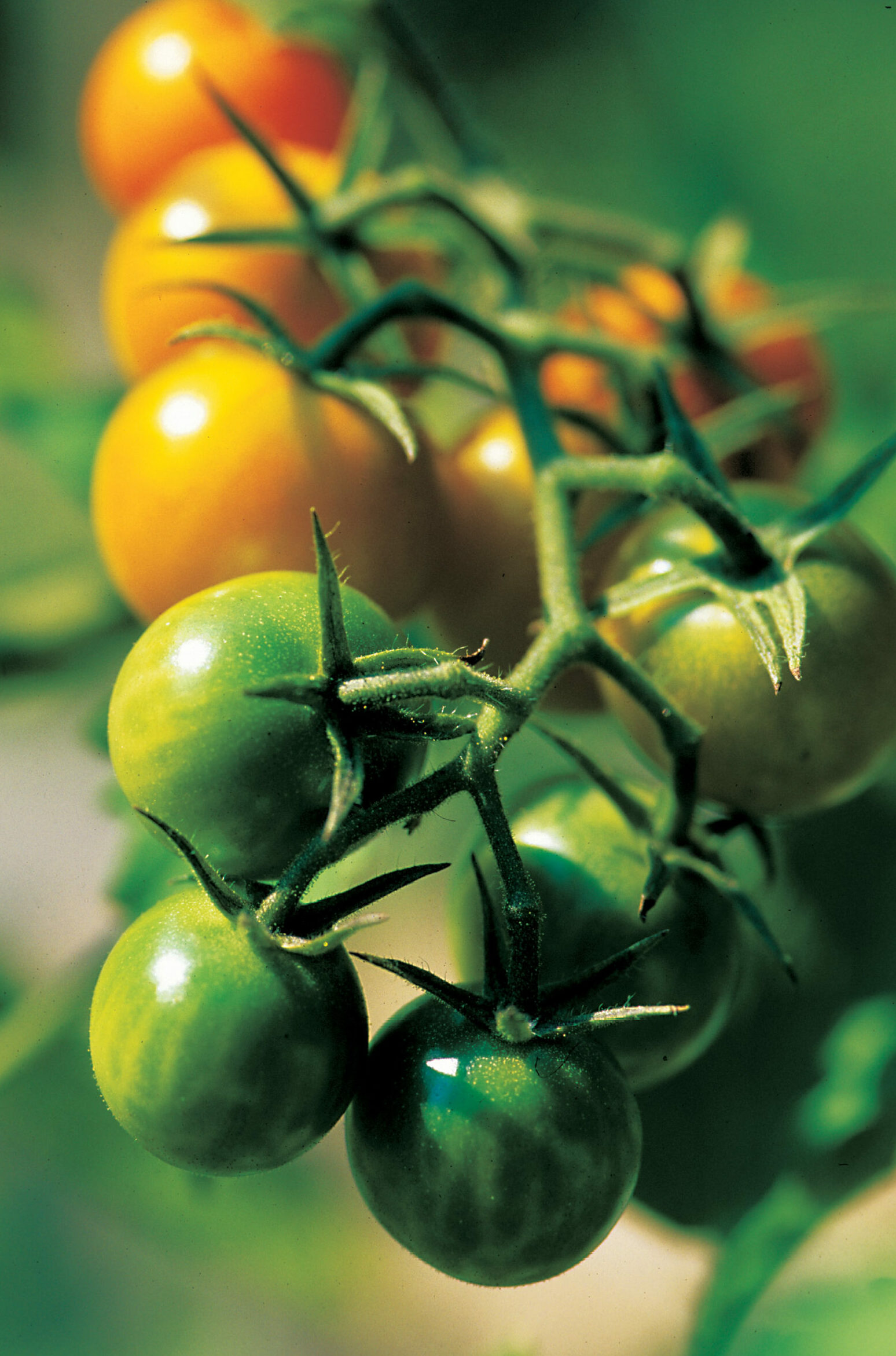
‘Sun Gold’, an orange hybrid, has attracted a cult following because of its burst of warm, sweet flavor, reminiscent of tropical fruit. Most of the people who tried these fruits in my garden last year could not stop eating them and decided to grow their own this season. ‘Sun Gold’ has received good reviews from around the country, including states as hot as Alabama. Expect fruit early and often.
‘Sweet 100 Plus’ is another all-around great choice if you like your cherry tomatoes sweet. Extremely vigorous (so you’ll have to stake the vines), productive, and crack-resistant, it’s widely available and is a reliable standard hybrid, no matter where you live.
If, instead of sweetness, you prefer a more versatile tomatoey flavor, grow ‘Camp Joy’. This variety, a favorite of organic gardening pioneer Alan Chadwick, is the most vigorous in my garden. The seeds of ‘Camp Joy’, an open-pollinated variety, are lovingly preserved on a farm of the same name near California’s central coast, where nights are cooled by ocean fog. ‘Camp Joy’ is also an excellent choice for drying.
‘Golden Nugget’ is another excellent choice where nights are cool. Developed in Oregon, this variety has tasty yellow fruit that does not require night temperatures above 55°F, as do most varieties. ‘Gold Nugget’ ripens fast and resists cracking. Determinate in habit and therefore compact, it is well suited to growing in containers.
Another group of devotees in my garden worships ‘Rose Quartz’. Its rosy-pink, extremely juicy, oval-shaped fruit hangs in abundant, grapelike clusters. Its only fault is its susceptibility to cracking in periods of alternating wet and dry weather. Mulching and even watering can ensure you a plentiful harvest.
‘Green Grape’ heirloom tomatoes are actually green and yellow when ripe (you can tell because they become softer and slip easily off the stem). Put them on your crudité platter to complete the mosaic of colors, or use them to make bright green salsa and ketchup.
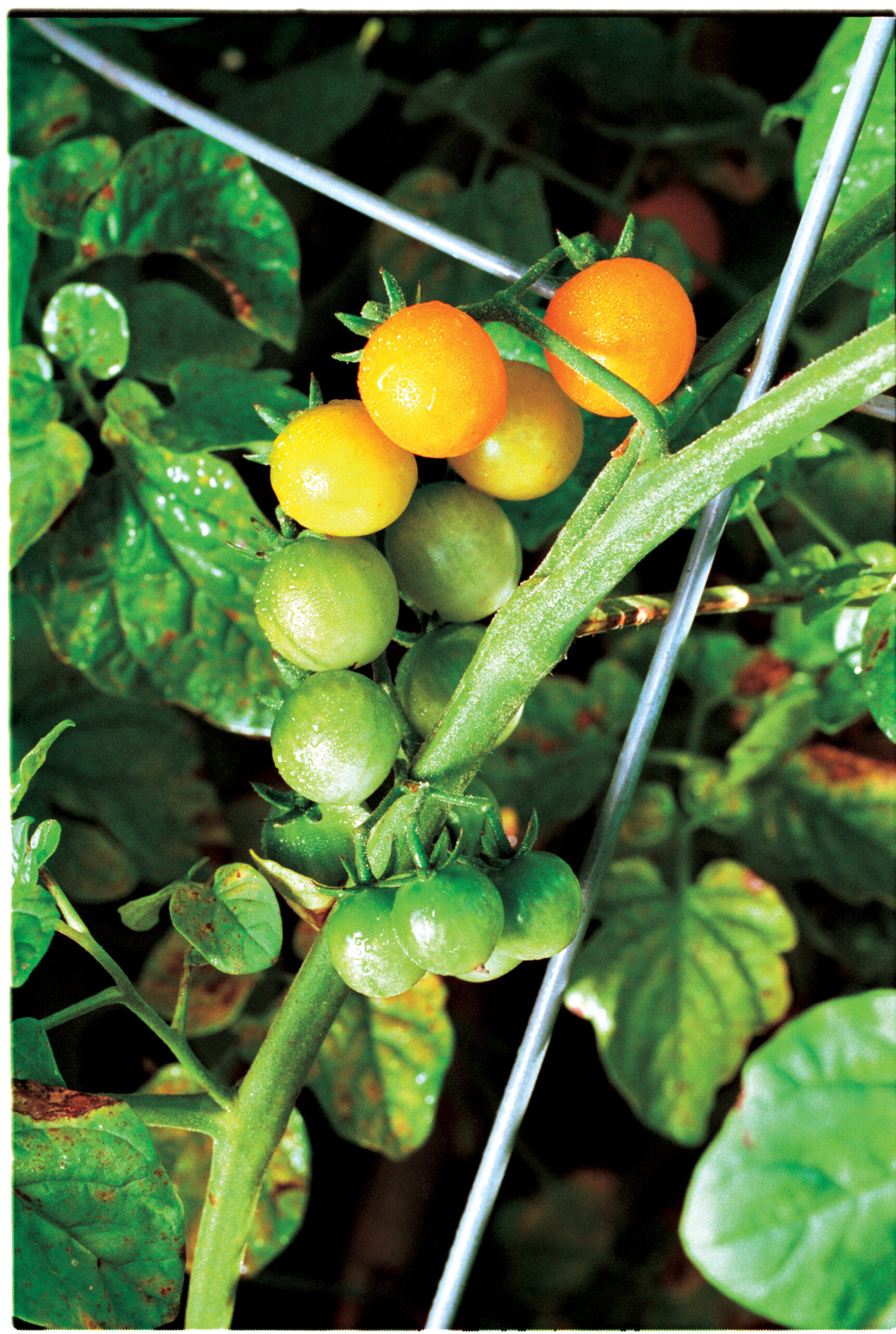

Children (and most adults) can’t help falling in love with adorable pear-shaped tomatoes. ‘Red Pear’ is meaty and is a good choice for drying; ‘Yellow Pear’ tastes lighter and more ethereal, with lemony overtones.
Tiny currant tomatoes come in red, pink, and yellow. Their fruits tend to be seedy, but have a distinctive sweet-and-sour flavor. Seed savers should be aware that because of the shape of their flowers, currant tomatoes are more likely to cross-pollinate with other varieties, so seeds saved from nearby tomatoes might not come true. If you plan to save seeds, set the plants at least 50 feet from other varieties.
Another type of cherry tomato that has become more widely available in the last several years is oval-shaped. One such variety is ‘Santa F1’, a hybrid from China. You’ll find similar oval tomatoes sold at markets as grape tomatoes.
Give cherry tomatoes full sun and regular watering
Growing cherry tomatoes is easier than growing many large-fruited tomatoes, primarily because cherries produce so many blossoms that there’s a good chance some will set fruit, even in less than ideal conditions. For healthy plants and prolific yields, give them what they like best: full sun (eight hours per day), fertile soil, and even moisture. If you buy nursery-grown plants, find the stockiest ones you can, without flowers or fruit. If only lanky plants are available, bury them sideways several inches deeper than they were in the pots. The plant will reach skyward, and more roots will develop along the buried stems.
Start cherry tomato seeds indoors on a warm surface six to eight weeks before the last expected frost date in your area. If it never freezes in your zone, start them six to eight weeks before night temperatures are consistently in the 50s. Use a fine seed-starting mix, and sow seeds ¼ in. deep and 2 inches apart. Water so the soil is moist but not soggy, and keep the soil temperature between 70° and 90°F. A seed-starting mat that provides consistent bottom heat will provide the warmth the seeds need to germinate.
If you cover your flats with plastic, make sure air circulates in. If you see moisture forming underneath the plastic, take it off to prevent rotting. Proper air circulation is critical.
When you see the first signs of life—usually within a week or two—provide strong light. Most gardeners don’t have a full day of intense sunlight pouring in through their windows, especially in early spring, so I’d advise against setting your seedlings on the windowsill. Position a grow light 2 to 4 inches away from seedlings for up to 18 hours a day. This should prevent plants from getting leggy.
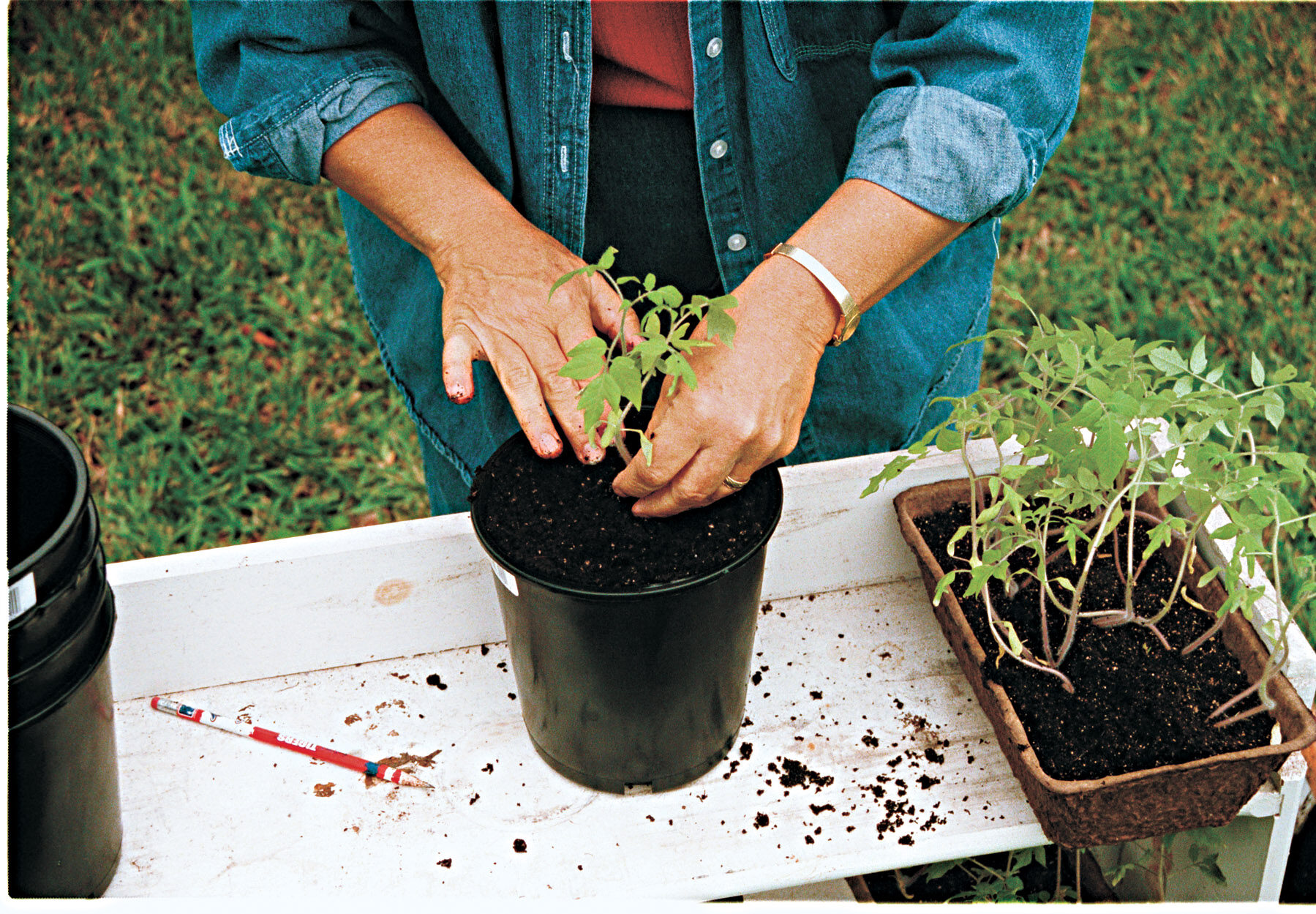
Once all the plants are up, high temperatures are no longer necessary or desirable, and 60° to 70°F days and 55°F nights are ideal. When the second set of leaves appears, it’s time to transplant. Loosen the roots with a pencil and transplant seedlings into 4-inch pots or deep flats. When night temperatures are in the 50s and all danger of frost is past, gradually acclimate your plants to the outdoors.
When they’re ready to live outside, prepare a garden bed by adding plenty of well-rotted manure and a source of phosphorus and calcium (such as a bone meal). Set seedlings 2 to 3 feet apart in rich, well-drained soil, and water them in well.
Like regular tomatoes, cherries need a consistent supply of water. At the same time, cherry tomatoes often remain productive in very hot weather that causes the blossoms of larger-fruited varieties to drop off. How much you need to water depends not only on the amount of rainfall you receive but also on your type of soil. If you have fast-draining soil, you’ll need to keep a close eye on your plants and water often if the weather’s been dry. Well-prepared clay will hold water for some time. Before watering, check the soil for dryness. If the foliage looks limp, you’ve waited too long to water.
Once the plants are established and about a foot tall, lay down mulch. I wait until the plants are this size because they are then better able to withstand damage by slugs or other insects that you might find under mulch. Either straw or compost makes a good mulch.
Indeterminate, or vining, cherry tomato varieties need strong supports. There are many possible methods. I like to prune the vines to two branches and wind them up strings supported by a wooden frame, for neat appearance, good air circulation, and easy access to the fruit. Caging requires the least work, however, and often produces an even greater yield. Use strong cages made from concrete reinforcing wire and stake them firmly into the ground; you’ll be glad later. Those flimsy inverted conical cages sold at garden centers bend and fall over under the weight of mature plants.
Tips for fighting tomato diseases and cracking
If tomato leaf diseases are a problem in your area, choose a variety described as resistant and vigorous. Rotate your crops, since many diseases survive for several years in the soil. Try not to plant tomatoes where other members of the nightshade family, such as peppers, potatoes, and eggplant, have been grown recently.
Watering the soil rather than the leaves, and mulching the ground with a material such as straw will keep the water from splashing onto the lower leaves and stems. This can help prevent diseases from spreading. Some gardeners even remove the lower leaves of tomato plants once they are well established to prevent them from picking up diseases from the ground. Red plastic mulch is said to keep nematode populations down. There are, however, diseases for which there are no resistant varieties.
I plant herbs like cilantro and dill near my tomatoes and let them go to flower. They attract beneficial insects that keep pests such as hornworms under control.
Cherry tomatoes are less prone to many of the cosmetic problems—blossom-end rot, catfacing, and sunscald—that plague larger-fruited types. Certain varieties are more prone to cracking than others, including most currant tomatoes, which often do better during hot, dry summers. I’ve never had problems with ‘Camp Joy’, ‘Sweet Million’, or ‘Gold Nugget’.
Cherry tomatoes are perfect container plants
All cherry tomatoes can be grown in containers. Use a 5-gallon pot with drainage holes at the bottom; I use plastic rather than terra-cotta because terra-cotta dries out so fast that you’ll be a slave to watering. Fill the pots with a planting mixture that drains well. Start and harden off the plants as directed above, and plant one tomato per pot in a sunny location protected from strong winds.
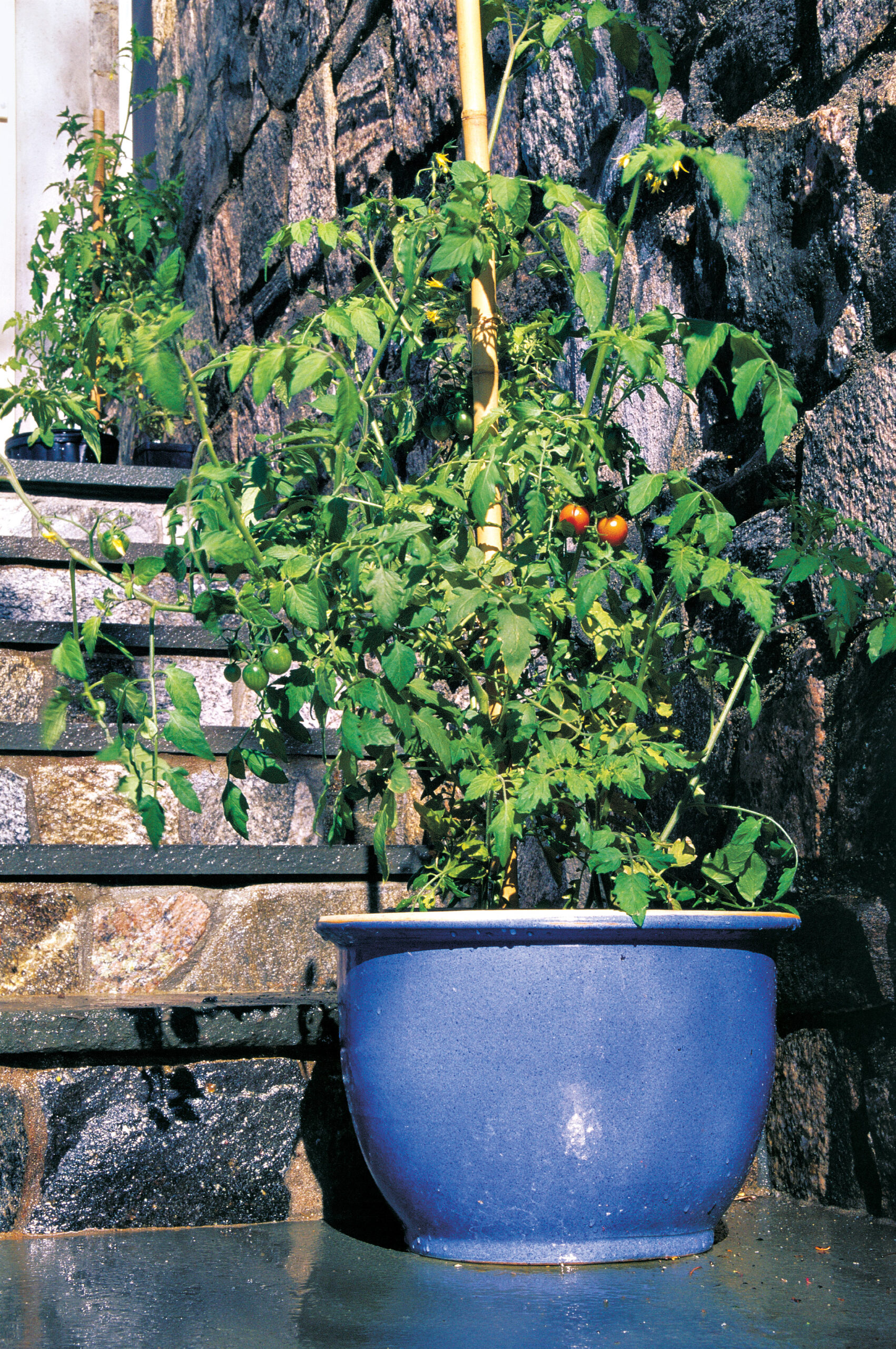
Water and nutrients leach quickly out of container plants. Feed every two weeks and keep the soil evenly moist, but don’t let the pots sit in a saucer full of water. A good fertilizer to use on container tomatoes should have more phosphorus than nitrogen. Too much nitrogen can result in abundant leaves and few fruits. Unless you are growing a very dwarf variety, provide a stake or cage to support the sprawling vines.
At harvest time, loose, ripe cherry tomatoes overflow into my hands, but plants often produce so much fruit that it’s hard to keep up with the picking. Now’s the time to start leaving baskets of fruit in strategic locations, or to recruit children to help pick. It’s amazing how many children who won’t touch larger varieties will eagerly reach for cherries.
At the market garden I worked for in Germany, everyone worked so quickly that I had to train myself to pick cherry tomatoes without eating them to keep up my speed. With peas, for which I still have absolutely no self-control, I, fortunately, got fast enough to be able to snack and pick at the same time.
Fine Gardening Recommended Products

Berry & Bird Rabbiting Spade, Trenching Shovel
Fine Gardening receives a commission for items purchased through links on this site, including Amazon Associates and other affiliate advertising programs.

Razor-Back Potato/Refuse Hook
Fine Gardening receives a commission for items purchased through links on this site, including Amazon Associates and other affiliate advertising programs.

The New Organic Grower, 3rd Edition: A Master's Manual of Tools and Techniques for the Home and Market Gardener, 30th Anniversary Edition
Fine Gardening receives a commission for items purchased through links on this site, including Amazon Associates and other affiliate advertising programs.


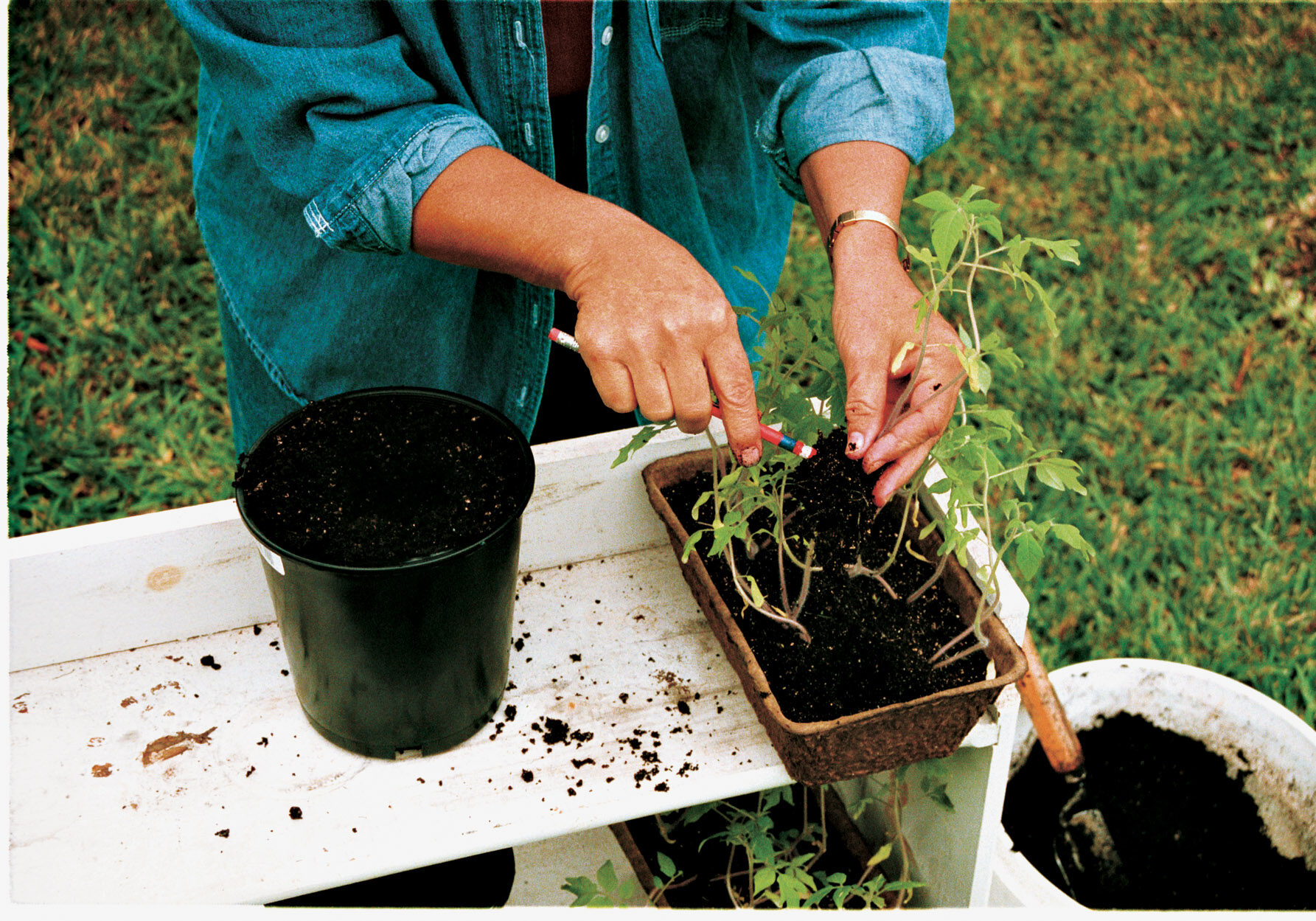




Comments
Log in or create an account to post a comment.
Sign up Log in